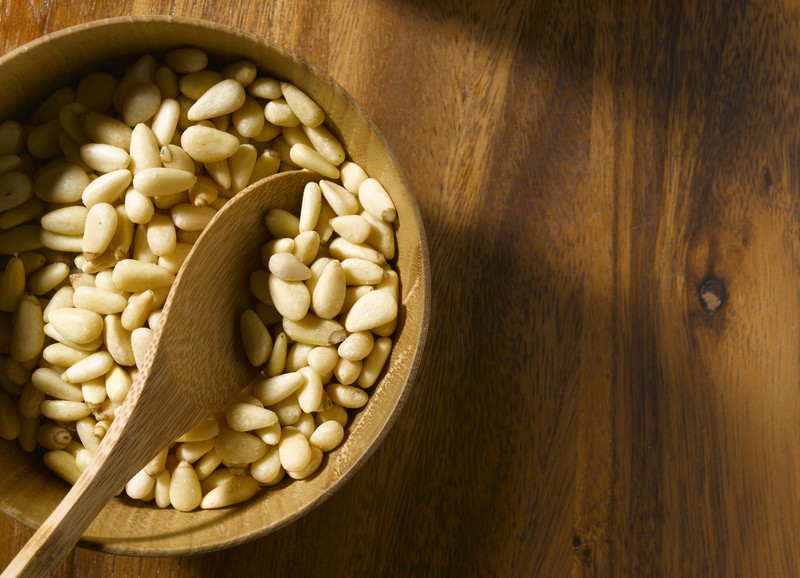Pine nuts are delicious, nutritious, and expensive. The average prepper will balk at the idea of purchasing this food item for their stores. But, worry not, because if you know the tricks of the trade and have access to the right pine trees, you can prepare your very own pine nuts.
The other day while out looking for edible plants, I came across some cones from the digger pines, also sometimes called gray pines. These cones were still intact and had not dropped their seeds, often called pine nuts.
I spent a bit of time and opened one. The digger pines have one of the harder cones and you will need a hammer or a big rock to open them. However, it is worth it you can get a good handful of nuts from one cone.
The individual seeds or nuts then need to be removed from their shell. This is a bit of work and a good pair of pliers will be a big help. If you don’t have the right kind of pliers, I used a Gerber Multi-tool I had with me and this worked just fine. Unshelled pine nuts have a long shelf life if kept dry and refrigerated. Shelled nuts (and unshelled nuts in warm conditions) deteriorate rapidly, becoming rancid within a few weeks or even days in warm humid conditions
There are about twenty species of pines that produce seeds large enough to be worth harvesting. In North America, the main species are three of the pinyon pines, Colorado Pinyon , Single-leaf Pinyon, and Mexican Pinyon. Eight other pinyon species are used to a small extent — the Gray Pine or digger pine, Coulter Pine, Torrey Pine , Sugar Pine and Parry Pinyon.
The pine nut is large and an excellent food source. It is, however, relatively difficult to harvest and requires a substantial group effort to do so. The pine nut harvest began in the late summer and lasted into the fall. It was essentially the last big food-gathering opportunity of the year before retirement into winter lowland quarters. It occurred at intermediate elevations in arid upland hills where junipers and pinions tend to grow. It was a significant social occasion, and most Great Basin people held these regions to be sacred ground.
This is a great self-sufficiency lesson to be learned, as doing so will not only give you a great option for adding protein and fat to your long-term food stores, it will also give you a ready source of currency for trading.
If you can go to a farmers market with a hefty load of pine nuts, there's no telling how much food you could walk out of there with. And that's the original goal of farmers markets: trading this for that.
We don't all have access to the same foods, so learning how to make use of the sources you DO have, such as pine trees, is tantamount to your success.
For more great instructionals for wild food prep, check out the original article at Preparedness Advice.

They probably are still using those tricks. At least, I know Pomo in my area still harvest acorns, seaweed, madrone berries, and other foods from around here. You introduce this like Native Americans are a people of the past. They aren’t.
Happy Indigenous Peoples Day.
Pinus edulis has a limited range. A thorough knowledge of your local fauna is the best way to go.